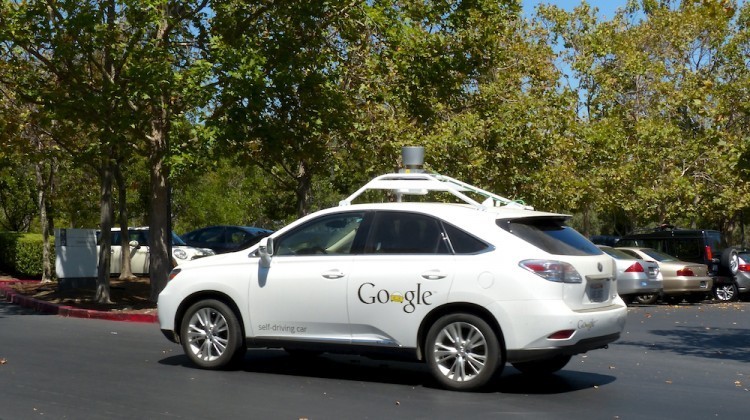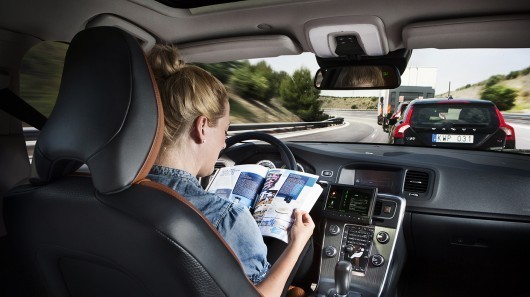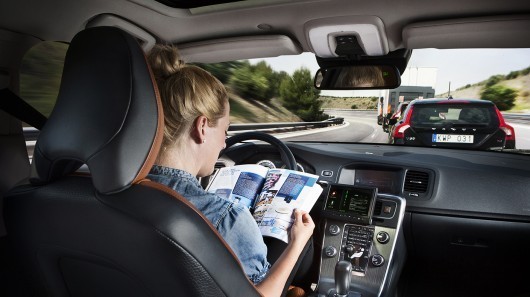Last week I wrote about the self-driving car or “autonomous driving car”. That article was just the primer for a more involved post that I’m covering right now regarding the impact the driverless car will have to car insurance, and states rights to write their own transportation laws.
As exciting as this technology sounds, it is truly going to change how we drive, what we drive, and if policy makers can’t agree, it could change where we can drive.
Imagine not being able to leave your state simply because the bordering state’s laws for self driving cars conflict with the laws in your home state. I’ll get to that in just a little bit.
To have a truly autonomous driving experience, cars will need to be able to communicate with each other, as well as the infrastructure around it. Things like red lights, stop signs, draw bridges and railroad crossings will all need to communicate with your car. That is accomplished through V2V technology or Vehicle to Vehicle communication.
V2V Technology is approved by Federal agencies

Back in February 2014, federal agencies approved vehicle-to-vehicle (V2V) communications systems. By allowing cars within a certain vicinity to “talk” to each other, they will know where other vehicles are and can compensate for a human driver’s inability to make the right crash avoidance decisions from common hazards such as blind spots or speeding vehicles. Utilizing a very short-range radio network that creates a 360-degree view of other vehicles in close proximity, the Department of Transportation estimates that V2V communications will be able to prevent 76 percent of crashes on the roadway.
So what do we do if any of those elements fail? What if the municipality can’t afford to maintain them properly? Another infrastructure concern that could lead to failure is road conditions and even weather. That’s right no one is yet discussing what happens when a driverless car hits a bad pot hole, a snow bank or a patch of black ice.
You can bet that a traffic accident will happen. And when they do happen, who is at fault?
Do we go after the carmaker for building the car, the driver for simply owning the car, or the software company for faulty programming?
Driverless car Insurance Options of the Future

The RAND Corporation produced a study in early 2014 and discusses liability insurance options for the future. The study suggests that a switch to national no-fault auto insurance laws VS the tort-based laws in most states. Currently insurance laws are on a state-by-state basis, and twelve states have some form of a no-fault law, but such laws are currently in the minority.
The problem right now is that we don’t really know how much driverless technology will reduce car accidents. We have estimations, based on scientific data and mathematical modeling, but we have very few real world miles under the wheels of these driverless cars. The Google driverless car has 300,000 crash free miles to its credit, however much of this mileage was done in testing in the southwest desert. This could all change soon.
States laws about driverless cars- currently
In 2013, Michigan joined California, Florida, Nevada and the District of Columbia as jurisdictions that allow the testing of autonomous vehicles on public roads. Under the Michigan law, drivers of such vehicles must remain in the driver’s seat at all times while the vehicle is on the road so that they can take over in the event the technology fails or there is an emergency. Why is this important? Where are the big three automakers located? Detroit Michigan.
Other states have looked into similar insurance proposals, and The U.S. Department of Transportation currently lets states allow limited testing of autonomous vehicles but prevents sales of driverless cars.
Car obsessed California has his long had a reputation of having some of the worst traffic in America. Driverless technology would be a welcome gift to the average California commuter. It is not surprising then that the Association of California Insurance Companies is lobbying “for changes clarifying that the autonomous vehicle’s manufacturer retain all liability for damage, losses or injuries caused by the operation of these vehicles as required by the enabling law (SB 1298),” according to Property Casualty Insurer’s Association of America.
California has made headlines recently by passing new insurance laws which require autonomous car testers to carry no less than $5 million dollars worth of insurance or surety bonds per vehicle. California law also require that at least one company-designated driver be onboard those vehicles at all times. Finally all the cars in the test fleet need to have steering wheels and brakes so that operators can take "immediate physical control" of the vehicles if necessary.
When crash avoidance technology slowly becomes standard equipment in your daily driver, insurers will have more real world data to better determine just how much of a reduction in the frequency and cost of accidents we can expect for driverless technologies.
In the future, Insurers will also be able to determine whether the accidents that do occur lead to a higher percentage of product liability claims, such as in the case with the 1980’s alleged Audi 5000 unintended acceleration investigation, where claimants blame the manufacturer or suppliers for what went wrong rather than their own behavior.
The threat of the liability being placed on the automakers is enough to bring the advancement of autonomous vehicle technology advances to a screeching halt. Why would automakers build cars that they had to insure? Why build cars that could bury you in lawsuits?
Nevertheless, automaker liability is likely to increase while personal liability is likely to decrease in a purely autonomous situation such as the cars proposed by Google. However, if a vehicle and a human share driving responsibility as in the case of the semi autonomous driving car, the insurance issues become much more complicated.
Insurance laws nationwide will simply have to change and here is why:
If 50 states have 50 different driverless car laws and regulations, it would be difficult for manufacturers’ systems to match them all. Worst case scenario of this would be that vehicle owners might not be able to travel outside their state of residence.
If your neighboring state requires a certain level of insurance or certain fail safe technology such as a steering wheel and a brake pedal, but the Google car that you are riding in has none of these things, then you would not legally be able to leave your own state.
Potential roadblocks to driverless technology adoption.
A survey by IEEE of more than 200 experts in the field of autonomous vehicles found six possible roadblocks to the mass adoption of driverless. Three of these were ranked as the biggest obstacles: legal liability, policymakers and consumer acceptance.
So currently as car makers are grabbing headlines with the announcement of autonomous driving car technology delivery dates, and with all the promise of utopian commuter travel, very little is being publicly discussed about just what a total traffic jam this will bring to our insurance laws, and our States rights.
The National Highway Transportation Safety Administration released a statement “America is at a historic turning point for automotive travel, motor vehicles and drivers’ relationships with them are likely to change significantly in the next ten to twenty years, perhaps more than they have changed in the last one hundred years.”
While this may be true, we are speeding towards a universal nationwide insurance policy and the possibility of being forced to park your vintage cars forever.
Stay tuned for my next post where I discuss what the potential impact to auto repair and auto body repair might mean for the you as a driverless car owner.

